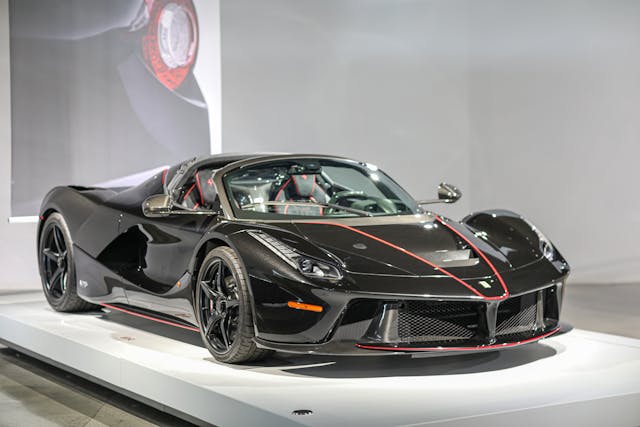Blame Europe for “socially acceptable” hybrid hypercars
The default start mode on Ferrari’s SF90 Stradale is silent. Keep going without firing up the V-8, however, and you’ll run out of juice after just 16 miles.
That’s probably not enough to get you to the local coffee shop, let alone your nearest cars and coffee meetup, yet this level of EV range is typical for today’s hybrid hypercars.
Why so little? Blame the Europeans.
Carmakers are under huge pressure to put the internal combustion engine on ice. In the European Union, new fossil fuel-powered cars will be banned from 2035. Here in the United Kingdom it’s 2030, and in the meantime they’re being forced to meet ever stricter, emissions, economy, and noise regulations.
When your business is powerful, noisy, high-performance vehicles meeting these restrictions is getting tougher and tougher. Fail to meet the requirements and car makers face massive fines. Every single gram per kilometer of carbon dioxide over the limit results in a penalty of €95 ($100)—and that’s paid on every car produced. Currently the limit is 95 g/km but that will be cut by a further 15 percent in 2025 and then an additional 37.5 per cent from 2030 until the 2035 deadline for ICE vehicles to be abandoned.
Then there’s noise. In cities like London and Paris audio-triggered cameras are being set up to catch drivers whose cars are too loud. In one year alone 10,000 London drivers were hit with fines, with a Lamborghini owner being nailed as the loudest at 112.98 decibels.
The exotic manufacturers need a workaround, and they need it now. That’s where these hybrids come in. Really, they’re just a way to game the system.

By mapping software to the official test cycles Ferrari, Lamborghini, Bentley, and others can achieve miracles. In a lab, at least. Take the latest Bentley Flying Spur Hybrid as a prime example. It will travel just 26 miles on a fully-charged battery alone before its 2.9-liter twin turbo V-6 has to kick in. Nonetheless that’s sufficient to produce only 75 g/km of CO2 on the WLTP test cycle and a combined economy of 3.3l/100 km (equivalent to 71 mpg U.S). By contrast the V-8 Flying Spur produces 270 g/km and the W-12 a hefty 320 g/km and a U.S. combined economy of 15-19 mpg.
Reality on the road is, of course, rather different to the laboratory and Bentley’s high-flying hybrid will probably only see 25 mpg on longer journeys—but it beats the system and lets the British brand keep selling without penalty until electrification becomes inevitable.
While Bentley performance is built around being effortless, for other exotics the soundtrack is as important as speed, and that is also under threat—in city centers at least. Partial electrification offers an escape route.
“Owners asked for the ability to drive in electric-only mode—a feature which was not initially available on our first hybrid car, the LaFerrari, but which was made the default start mode for the SF90 Stradale due to client demand. It seems our clients appreciate driving in electric-only mode in city centers, presumably because it is more socially acceptable to do so,” Ferrari spokesman Jason Harris told Hagerty.
Ferrari and others may have framed their electrification antics as being about performance—and the instant torque of electric motors certainly add speed, but make no mistake, the only reason it’s happened is to beat a flawed testing system.
Now where have we heard of that before?



